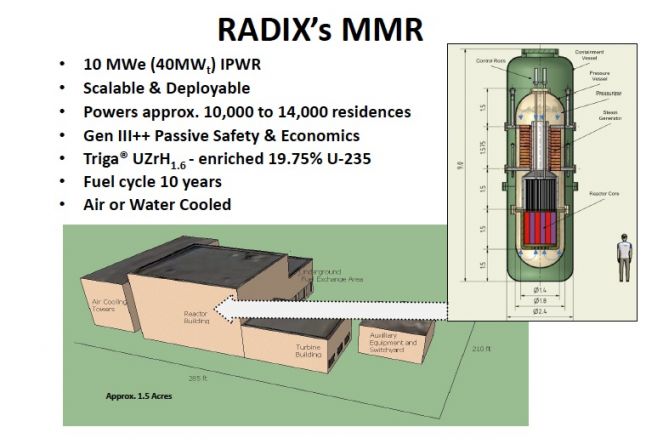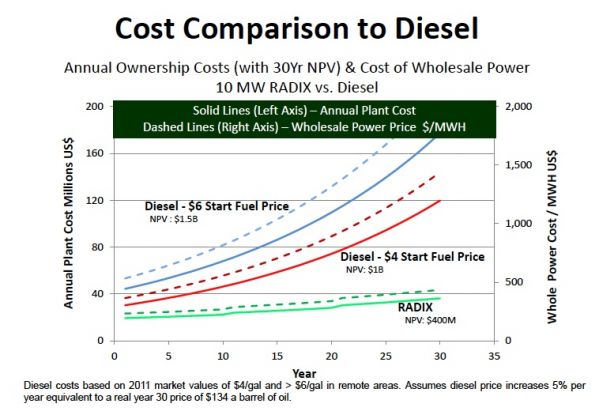Radix believes small ten-megawatt nuclear power plants can replace diesel fuel generators in off-grid and military applications.
Greentech Media has been on the forefront of covering "new" nuclear power as a potential clean energy source for several years now.
We've taken detailed looks at small modular reactors (SMRs), including those from B&W, NuScale and Hyperion, fusion technology from General Fusion and TriAlpha, and nuclear waste disposal from Kurion. We've reported on the Khosla- and Bill Gates-funded TerraPower. We've looked at the Thorium fuel cycle, as well as the painful economic realities of nuclear plant construction. We recently reported on the first nuclear plant construction that the Nuclear Regulatory Commission has approved in 34 years.
Nuclear power is always a contentious issue. Yes, nuclear power is carbon-free in operation -- but uranium extraction and plant construction can hardly be considered carbon neutral. And yes, it's baseload power with a low price per kilowatt hour, but it's very expensive to build and harrowingly difficult to finance.
And then there are the huge and vexing issues of safety, unused fuel, and proliferation.
Amidst these challenges and promises, startup Radix is looking to design miniature modular reactors (MMRs) that are transportable and easily deployed.

The Radix design is similar to some SMRs in that it is an integral pressurized water reactor (PWR) with the pressurizer and steam generator in a single vessel. Where it differs is the fuel design: the Radix fuel is based on Triga, an all-metal fuel with a very high power density and thermal conductivity compared to uranium oxide with a long history of use in research reactors -- which might make it more readily approved by the Nuclear Regulatory Commission (NRC). Triga, originally developed at General Atomics, has an inherent safety feature: a very fast temperature response, which means that in the event of a control rod insertion error, the reactor will shut itself down. The Triga design is an open-pool design.
The startup was funded by SBIR grants and bootstrapped by the founders, but the founders are now looking for venture or strategic funding. The original SBIR funding was directed toward energy sources for forward operating bases for the U.S. military. Radix's conclusion is that the best type of energy in that application is nuclear power. The miniaturized Radix design would be transportable on a flatbed truck.
I spoke with the founders of Radix, Paul Farrell and Philip Moor. They have moved their focus to civilian applications and "reconfigured the design for civilian applications."
The goal is to go after off-grid applications as opposed to the on-grid power sources envisioned by the SMR manufacturers. The value proposition claimed by the company is that the lifetime cost of an MMR beats the lifetime cost of diesel power. Further, the company believes the device would work on islands or remote geographies such as in Alaska, as well as in the previously mentioned military applications.
The challenges to this company are many. Raising funding from conventional VC sources will be an uphill battle -- VCs want to isolate risk and this technology, like all nuclear technologies, has market, cost, and regulatory head winds. Nuclear has a post-Fukushima black eye, and the NRC is not known for flexibility or speed.




